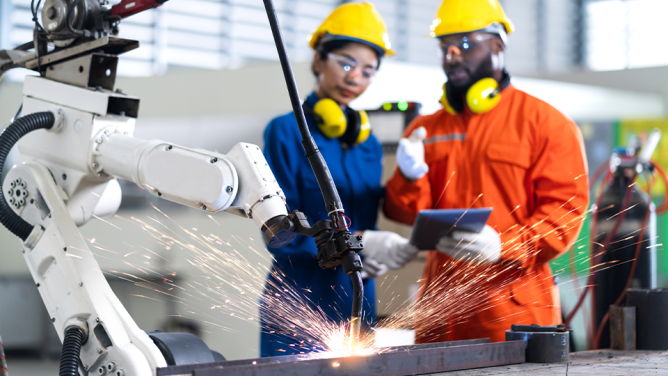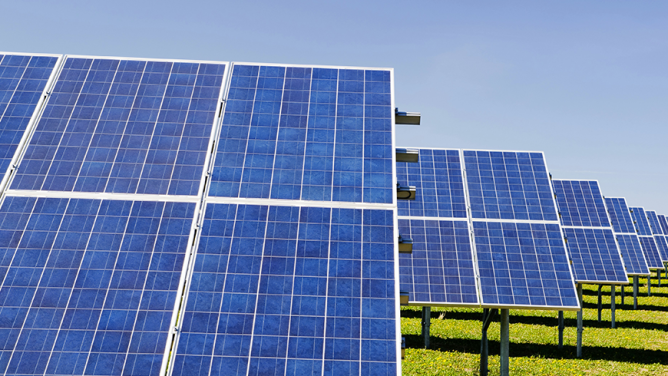“More important than oil or gas”
When Ursula Von der Leyen compared lithium and rare earth elements to hydrocarbons during her State of the Union 2022 speech, she also made an important observation: the energy transition is (amongst other things) a question of resources. So-called “critical” minerals play a central role in the energy transition. Used in solar panels, wind turbines, batteries and all low-carbon technologies, they partly determine the success of decarbonization strategies. For example, the IEA explains that an electric car requires six times more minerals than a conventional car. This stress on resources is set to increase as carbon neutrality plans and progress also increase. According to Capgemini and the French National Institute for Circular Economy, in a “business as usual” scenario, the criticality of the most in-demand metals and minerals could be multiplied by a factor of 16 by 2050.
Avoid and reduce
To avoid shortages, the first solution consists (as often is the case) of trying to cut back as much as possible, by limiting demand. According to the WWF, such demand can be reduced by 58%, while maintaining our ability to decarbonize the economy. This can be achieved through three key levers: technological choices (30%), circular economy (18%) and recycling (10%). For the NGO, the issue is more than just about carbon, as it is also an issue of preserving biodiversity. Limiting the demand for resources means that natural areas still untouched by mining activities, such as the seabed, remain protected.
Disruptive innovations ?
Innovation offers the most promising – and the most uncertain – pathways, as seen in today’s development of solutions designed for their low impact on resources. This movement of technological substitution could have a major impact in areas as far removed as batteries or concrete. Cobalt-free batteries are already looking to be rather promising, while more surprising materials such as cotton or seawater are being explored as other serious options. At the same time, significant progress is being made on low-carbon concretes, which replace traditional clinker with geopolymers or calcium sulfoaluminate cements. Meanwhile, carbon capture could finally make imagining new ways of reducing emissions a possibility, while giving rise to a circular carbon economy.
Circularity a must
Despite being promising, technological advances are only part of the solution. A major cultural shift is required, one which moves away from a linear model to a circular resource economy. More than 50 million tons of waste from electrical and electronic equipment (WEEE or e-waste) are produced globally each year, for a recycling rate of around 17.5%. By 2030, more than a million electric vehicle batteries are expected to reach the end of their life. In Europe, a legal framework regulating the life cycle of batteries has entered into force to ensure a high level of recycling. Manufacturers are also following the trend, investing significant means to boost circularity. Take Northvolt, which recently raised €5 billion to expand its recycling capacity. The Swedish group also opened the largest battery recycling plant in Europe, in Fredrikstad in Norway. Its goal for 2030? To source 50% of all its raw materials requirements from recycled batteries.
Towards circular reindustrialization?
The “old” economy businesses are often singled out for dragging their feet when it comes to clean energy (especially regarding China). Transitioning to more circular models and new types of resources suggests an opportunity for reindustrialization. According to CapGemini, by introducing circular reindustrialization, France could reduce dependence on metals and minerals by 76%. In addition to effectively protecting economic sovereignty, it can also be used as a way to boost local industrial activity, replacing natural resources importations. An example of this is Verkor, which raised a record-breaking investment (€2 billion) in 2023. The “low-carbon” battery maker will build a gigafactory in Dunkirk, France, and plans to create 1,200 direct jobs.
The ghost of greenflation
This wonderfully eloquent neologism says it all. It refers to a rise in price of raw materials linked to the increase in demand for decarbonized solutions. “greenflation” is also described as the result of stricter environmental regulations, which are more restrictive for mining operations. In fact, this upward trend has a strong political dimension, often used by those who have an interest in slowing down fossil fuel phase-out. In a recent article titled “The deflation of ‘greenflation,’” the Financial Times brought the price of lithium to the fore, which in 2024 was back at its 2021 price. Between restructuring distribution chains and a sharp increase in supply, the promise of an economic catastrophe have so far turned out to be false.
A rare metals war ?
Apart from the issue surrounding cost, the resources key to the energy transition are currently at the center of geopolitical issues. Take China, which refines 92% of global rare earth elements, 68% of the world’s cobalt, 65% of nickel and 60% of lithium. The country uses its complete domination of the supply chain to exert political pressure, like when it blocked exports of graphite to Sweden in 2020, or rare earth elements to Japan 10 years before that. More generally, and in a context of global shortage and decline, 10% of global exports of critical raw materials are currently subject to restrictive measures. In the more or less long term, this growing political tension around resources could represent a major obstacle to the climate transition.
Contrary to popular belief, the issue of critical resources actually concerns all industrial players, and not just the battery and smartphone markets. For example, metals are found almost everywhere in construction: from silicon in photovoltaic panels to cobalt in blue pigments, including chrome or nickel in locksmithing, or gallium-indium in LED lighting. This ubiquitous nature is simply an additional argument in favor of conserving natural resources.



